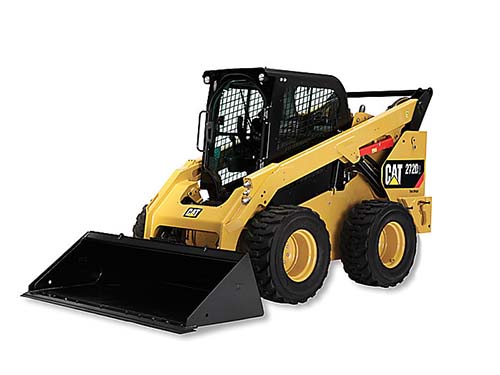Equipment supply

|
‘Supply’ is the flow of resources used to satisfy a demand, such as materials, labour, information and skills – from a supplier to a user or consumer.
Equipment supply – in a construction sense – is the flow of equipment from a supplier to a site with the aim of facilitating the construction process. For example, the supply of an excavator to help dig the foundations, or a crane to lift heavy materials.
Very broadly, the term ‘equipment’ generally refers to apparatus that is used for specific purposes, e.g pumps are used to pump water, angle grinders are used to cut through hard materials. This is as opposed to individual tools such as screwdrivers, hammers and trowels which are instruments that are generally used by hand.
Usually, a contractor or sub-contractor orders the equipment from a supplier to complete a particular task. Because construction equipment can be very costly, and because it may sometimes be needed by a contractor or sub-contractor for only small duration during the year, it may be financially advantageous to hire the equipment only for the period it is required. This is not only cheaper for the contractor but also means the equipment does not require storage. Also, hiring the equipment means the contractor does not have to maintain it.
The following is a selection of typical equipment that may be supplied to a construction site:
- Access equipment.
- Attachments
- Bowsers
- Compressors
- Dumpers
- Forklifts/telehandlers
- Mixers
- Pumps
- Rollers
- Skips
- Topsoil screeners
- Wheeled excavators.
Equipment may also be required for inclusion in the building itself, for example; washing machines, coffee machines and scanning equipment, fume cupboards and so on.
In this case, it is important to identify equipment that will be provided by the contractor as part of the main contract and equipment which will be provided outside of the main contract (because the client may already have the equipment, or they may have existing suppliers). This is particularly important where equipment supplied outside of the main contract may have an impact on the construction works, perhaps needing to be accommodated in a certain location, or requiring fixing, power supply, air supply, water, drainage, telecommunications connection, etc.
[edit] Related articles on Designing Buildings Wiki
Featured articles and news
Latest Build UK Building Safety Regime explainer published
Key elements in one short, now updated document.
UKGBC launch the UK Climate Resilience Roadmap
First guidance of its kind on direct climate impacts for the built environment and how it can adapt.
CLC Health, Safety and Wellbeing Strategy 2025
Launched by the Minister for Industry to look at fatalities on site, improving mental health and other issues.
One of the most impressive Victorian architects. Book review.
Common Assessment Standard now with building safety
New CAS update now includes mandatory building safety questions.
RTPI leader to become new CIOB Chief Executive Officer
Dr Victoria Hills MRTPI, FICE to take over after Caroline Gumble’s departure.
Social and affordable housing, a long term plan for delivery
The “Delivering a Decade of Renewal for Social and Affordable Housing” strategy sets out future path.
A change to adoptive architecture
Effects of global weather warming on architectural detailing, material choice and human interaction.
The proposed publicly owned and backed subsidiary of Homes England, to facilitate new homes.
How big is the problem and what can we do to mitigate the effects?
Overheating guidance and tools for building designers
A number of cool guides to help with the heat.
The UK's Modern Industrial Strategy: A 10 year plan
Previous consultation criticism, current key elements and general support with some persisting reservations.
Building Safety Regulator reforms
New roles, new staff and a new fast track service pave the way for a single construction regulator.
Architectural Technologist CPDs and Communications
CIAT CPD… and how you can do it!
Cooling centres and cool spaces
Managing extreme heat in cities by directing the public to places for heat stress relief and water sources.
Winter gardens: A brief history and warm variations
Extending the season with glass in different forms and terms.
Restoring Great Yarmouth's Winter Gardens
Transforming one of the least sustainable constructions imaginable.






















